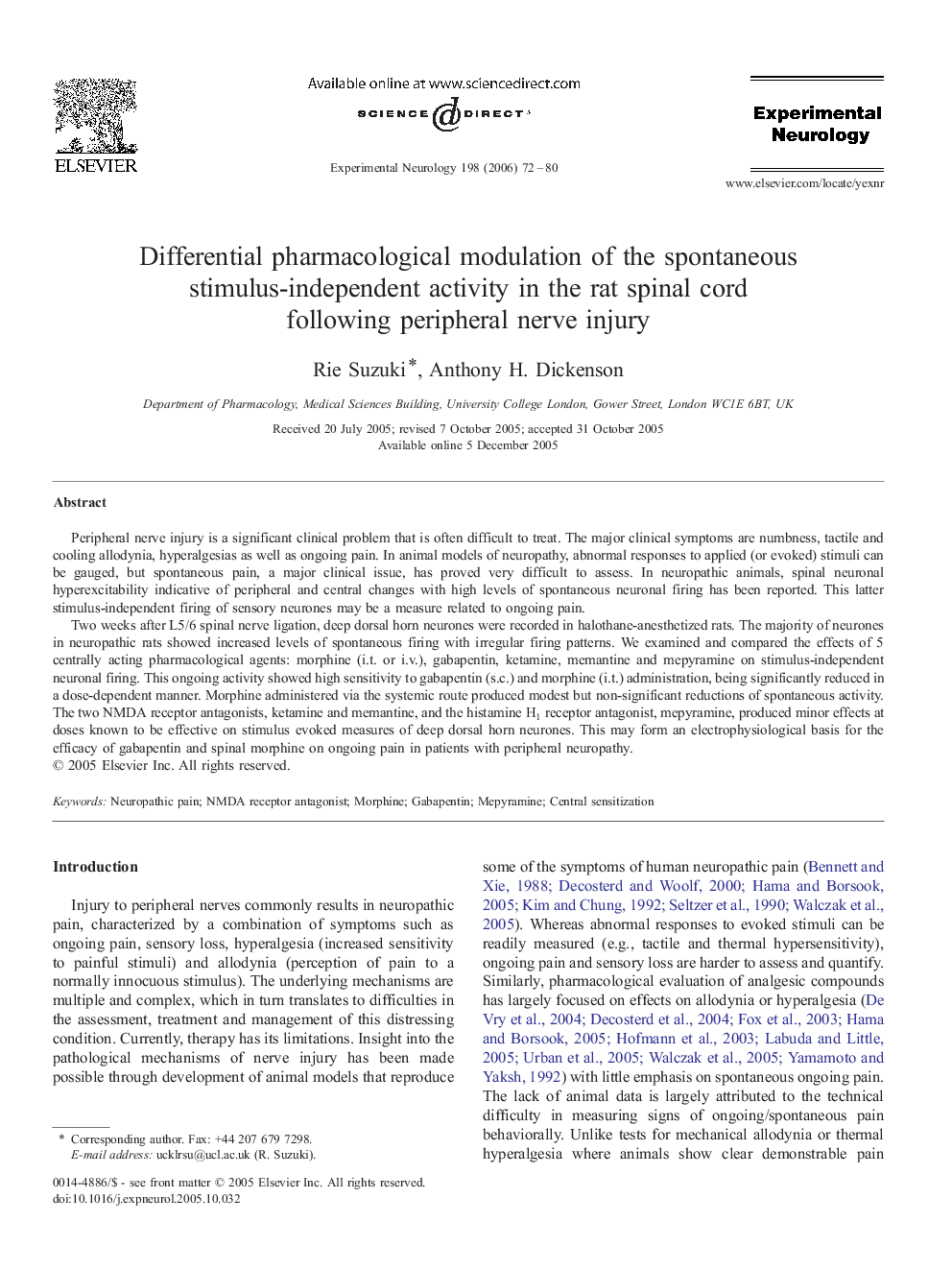| Article ID | Journal | Published Year | Pages | File Type |
|---|---|---|---|---|
| 3057427 | Experimental Neurology | 2006 | 9 Pages |
Peripheral nerve injury is a significant clinical problem that is often difficult to treat. The major clinical symptoms are numbness, tactile and cooling allodynia, hyperalgesias as well as ongoing pain. In animal models of neuropathy, abnormal responses to applied (or evoked) stimuli can be gauged, but spontaneous pain, a major clinical issue, has proved very difficult to assess. In neuropathic animals, spinal neuronal hyperexcitability indicative of peripheral and central changes with high levels of spontaneous neuronal firing has been reported. This latter stimulus-independent firing of sensory neurones may be a measure related to ongoing pain.Two weeks after L5/6 spinal nerve ligation, deep dorsal horn neurones were recorded in halothane-anesthetized rats. The majority of neurones in neuropathic rats showed increased levels of spontaneous firing with irregular firing patterns. We examined and compared the effects of 5 centrally acting pharmacological agents: morphine (i.t. or i.v.), gabapentin, ketamine, memantine and mepyramine on stimulus-independent neuronal firing. This ongoing activity showed high sensitivity to gabapentin (s.c.) and morphine (i.t.) administration, being significantly reduced in a dose-dependent manner. Morphine administered via the systemic route produced modest but non-significant reductions of spontaneous activity. The two NMDA receptor antagonists, ketamine and memantine, and the histamine H1 receptor antagonist, mepyramine, produced minor effects at doses known to be effective on stimulus evoked measures of deep dorsal horn neurones. This may form an electrophysiological basis for the efficacy of gabapentin and spinal morphine on ongoing pain in patients with peripheral neuropathy.
